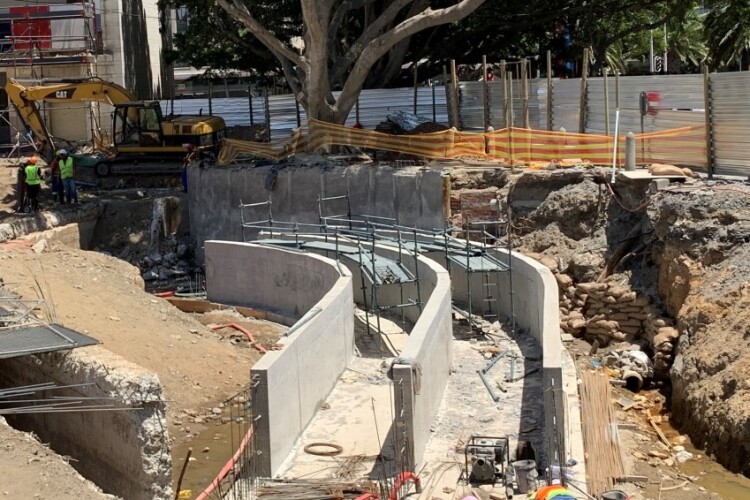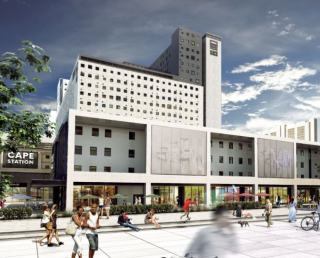The R1.3 billion (£65 million) landmark development, known as Cape Station, will include a 3,085-bed, purpose-built student accommodation block, 6,700m2 of retail space and a new public square with landscaped gardens and artwork to encourage tourist engagement.
The client is Eris Property Group and the main contractor is GVK-Siya Zama.
As well as the foundations, Keller’s scope of work has included demolition of previous structures and installation of services.
The piling and lateral support work made up the bulk of Keller’s contract and involved four different pile types across seven pile sizes. The majority were driven cast in-situ ‘Franki’ piles – a staple product offered by Keller.
This type of pile is typically cost effective, has good load-bearing capacity and is well suited to the tricky ground conditions encountered in Cape Town, said Keller.
“We installed these versatile piles in two variants: compression-only piles and tension/compression piles,” said project manager Arnold van Taak.
“The tension capacity was improved by installing a rock anchor into the bedrock below the toe of the pile. This anchor forms an integral part of the pile, enabling it to transfer tension loads to the bedrock during certain seismic occurrences.

He added: “It’s worth noting that we used dedicated piling rigs that take up far less space compared to crane-mounted pile-driving leaders. These are beneficial in projects with space constraints and when there’s other work going on site. This piling method also offers good production rates and really helped us achieve our contracted milestone dates.”
On the northern site boundary, where a new culvert was to be constructed in a deep excavation, Keller used reinforced ODEX (overburden drilling eccentric) piles socketed into the bedrock.
Nearby services and trees precluded the use of a typical batter slope, anchors or a crane requiring high headroom. Here, the ODEX piles allowed the creation of a cantilever to support the embankment.
“This innovative solution created a stable slope without the need for anchors, avoiding potential clashes with existing public services,” explained van Taak. “In addition, the equipment it required took up limited headroom, safeguarding the trees.”
In other areas of the site, Keller has used temporary cased auger piles, both in compression and tension. Tension capacity was achieved by retrofitting rock anchors and, in some instances, socketing piles into the bedrock. Where rock sockets were chosen, the resistance to friction enabled tension loads to be transferred into the bedrock.
Micropiles were also employed, using small rigs that could fit through narrow doorways and required little headroom.
Got a story? Email news@theconstructionindex.co.uk
.png)



